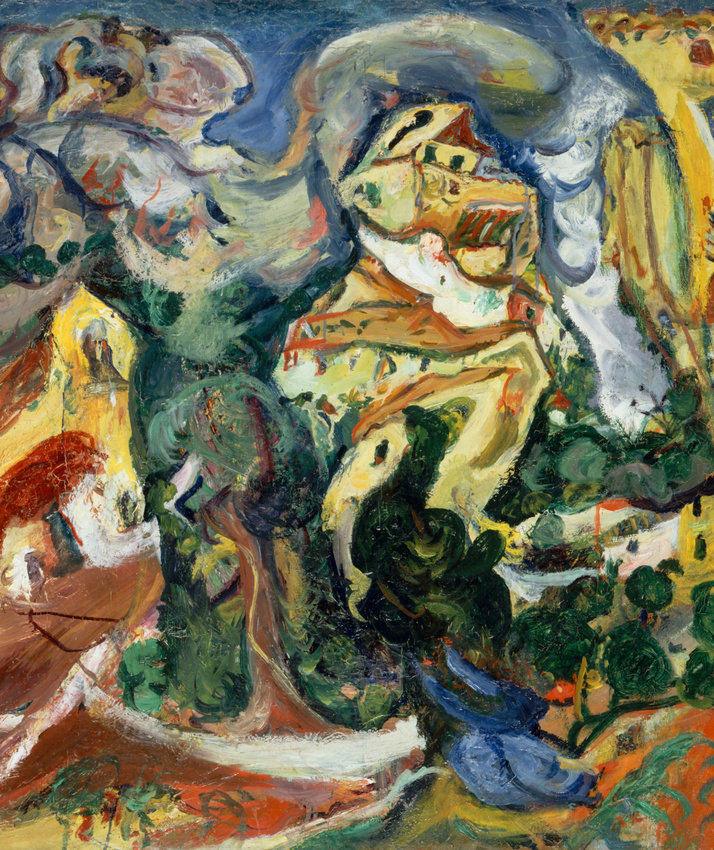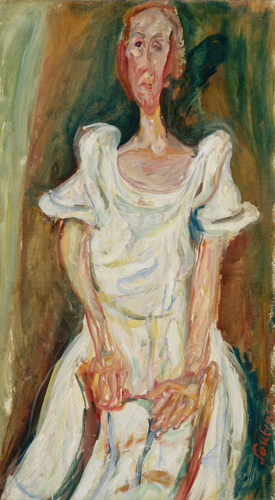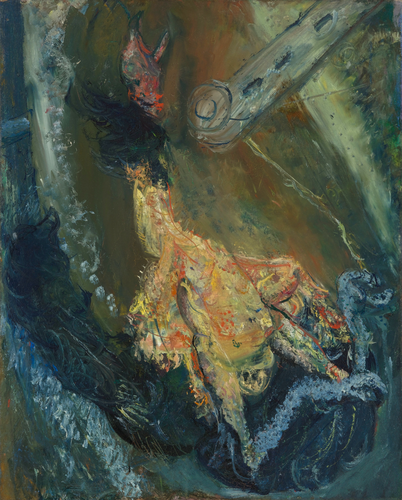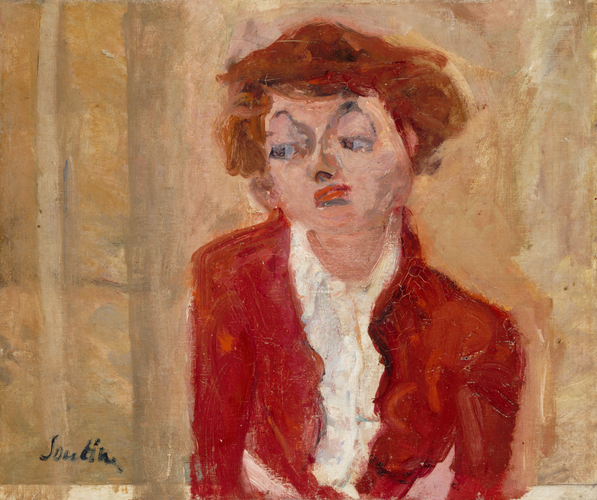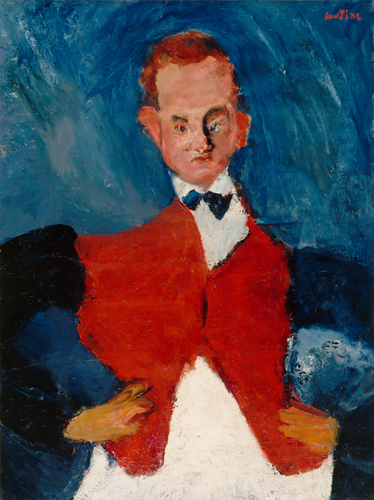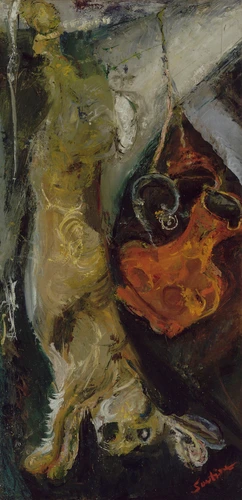Le Village
The Village is the most radical and the most unusual of Soutine’s landscapes. The subject he has chosen here appears classical - a landscape, houses and trees, with the sky above - but his treatment reveals both a tormented character and an affirmation of great modernity. In fact, all the elements in this painting have been dramatically distorted, and appear intertwined, eliminating any feeling of perspective or balance. The mental landscape eclipses the strict observation of nature to make way for the expression of feeling. However, the painting is modeledafter a real place. The landscape in the Musée de l’Orangerie belongs to a group of nine paintings produced in 1923-1924 at La Basse Gaude, a village around eight kilometres from Cagnes. Soutine chose this place for its houses and its mill that cling to a rocky hillside at different heights. He produced this painting at a time when he was experiencing contradictory feelings about this landscape that he had so loved. In fact, he wrote to the Parisian gallery owner Zborowski at the end of 1923: "I’d like to leave Cagnes, I can no longer stand this landscape…" This reinterpretation of an anguished and subjective view of his environment places Soutine in the tradition of Expressionist painting that had its roots in Europe in the late 19th century, and which was predominant before and after the First World War.
